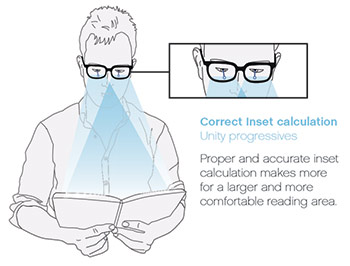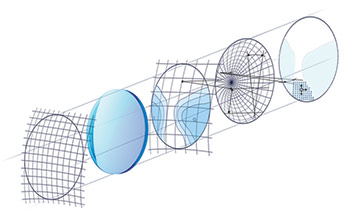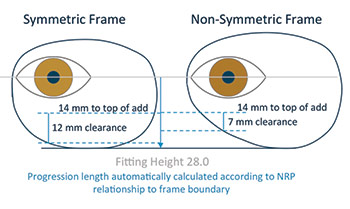
 Your lens success is a product of how you changed the basic lens choice used in your office and the go-to lens that has been successful for most of your patients; however, I’d like to suggest… change should happen faster. You have a new choice to consider.
Your lens success is a product of how you changed the basic lens choice used in your office and the go-to lens that has been successful for most of your patients; however, I’d like to suggest… change should happen faster. You have a new choice to consider.For example, patients with reading issues might say “To read with my (right/left) eye, I have to move my head slightly right or left to see clearly. What’s wrong with my new lenses?” Did you know new technology and upgraded lenses can solve binocularity issues?
Ask yourself, “Does my current first choice progressive deliver the opportunities for practice growth, ease of use, ease of lab, staff preference…? What could be better?” Did you know that in a preference test, this new lens was preferred with statistical significance? Doesn’t that suggest better patient satisfaction?
Fitting errors remain the most common reason for progressive lens redos. While the wrong height is easy to fix, sometimes the frame chosen changes the availability of the reading area. How is that further complicated when a less experienced dispenser is making the choice? Experience helps but a poor frame choice affects vision and satisfaction. And while there are varying corridors available, one must make confusing corridor length choices.
Wearer feedback collected by the VSP Optics Group caused an investment in research and development. Then, patients tested these newly discovered attributes of lens design choice. Testing found statistically significant wearer confirmation of the changes made. The result is a new design series that improves reading and binocularity, overall progressive lens satisfaction so that vision is more effortless for the patient. Last, these technology changes made it easier to use for the eyecare professional.
The New Unity Via progressive is the natural evolution of the Unity progressive lens series. It uses technology to simplify complex corridor choices and patient discomfort. It addresses progressive lens binocularity problems with a new lens-eye model and variable reading inset to ensure better comfort from far to near through the lens’ mid-range portion.
 There is an upgraded understanding of frame size and shape that embeds automatic frame fit solutions that ensure that the corridor length is never too short or too long, and that the frame’s size and shape doesn’t change the available size of the reading area. Lastly in a significant series of wearer tests, complaints were addressed and real life improvements implemented. Once completed, the lens was made available.
There is an upgraded understanding of frame size and shape that embeds automatic frame fit solutions that ensure that the corridor length is never too short or too long, and that the frame’s size and shape doesn’t change the available size of the reading area. Lastly in a significant series of wearer tests, complaints were addressed and real life improvements implemented. Once completed, the lens was made available.It makes sense that VSP Optics Group would invest in constant lens improvement; after all, without the ability to constantly earn each practice’s business, there are always other good products in the marketplace. Finding the best for your office makes the difference. Through F, N and O category opportunities, one can fit a broad spectrum of patients to improve patient satisfaction, increase practice premium lens usage and meet 2017 and 2018 revenue goals.
So when you ask patients, “If there were something we could do to improve the lenses that you are now using, what would that be?” You can be sure that Unity Via can provide better solution for the variety of vision improvements that patients want from their progressives. Consider looking at an upgrade to Unity Via today.













